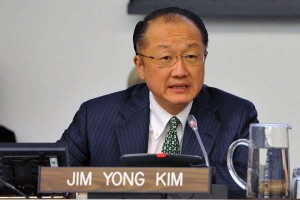World Bank offers Africa $57 billion
March 20—In the next three years, the World Bank Group, is making $57 billion available for sub-Saharan Africa mostly through the International Development Association (IDA), the soft lending arm of the group and a new Private Sector Window (PSW) has been set up.
“This represents an unprecedented opportunity to change the development trajectory of the countries in the region,” Jim Yong Kim, the World Bank Group President said on the sidelines of the G-20 finance ministers and central bank governors conference in Germany.
Sixty per cent of the IDA financing is expected to go to sub-Saharan Africa, home to more than half of the countries eligible for IDA financing. The money will be ready for the period known as IDA18, which runs from July 1, 2017, to June 30, 2020.
Kim said, “With this commitment, we will work with our clients to substantially expand programmes in education, basic health services, clean water and sanitation, agriculture, business climate, infrastructure, and institutional reform.”
Some $45 billion will be channeled through the IDA targeting the poorest countries while an estimated $8 billion is being put aside for private sector investments through the International Finance Corporation (IFC), a private sector arm of the bank group. Another $4 billion is earmarked for the International Bank for Reconstruction and Development, the group’s non-concessional public sector arm.
In December, development partners agreed to a record $75 billion for IDA, a dramatic increase based on an innovative move to blend donor contributions to IDA with World Bank Group internal resources, and with funds raised through capital markets.
The PSW will supplement existing instruments of IFC and the Multilateral Investment Guarantee Agency (MIGA) – the group’s arm that offers political risk insurance and credit enhancement – to spur sound investments through de-risking, blended finance, and local currency lending.


 African Heads of state head to South Korea next week for Summit talks
African Heads of state head to South Korea next week for Summit talks
 Trading leads as main source of income for Ugandans
Trading leads as main source of income for Ugandans
 New leadership for bankers’ umbrella as total assets top $12 billion
New leadership for bankers’ umbrella as total assets top $12 billion
 Brussels Airlines to announce Nairobi service
Brussels Airlines to announce Nairobi service
 SITA promises enhanced travel experience after Materna acquisition
SITA promises enhanced travel experience after Materna acquisition
 Saudia’s 105 aircraft order stretches A320neo lead over rival Max
Saudia’s 105 aircraft order stretches A320neo lead over rival Max
